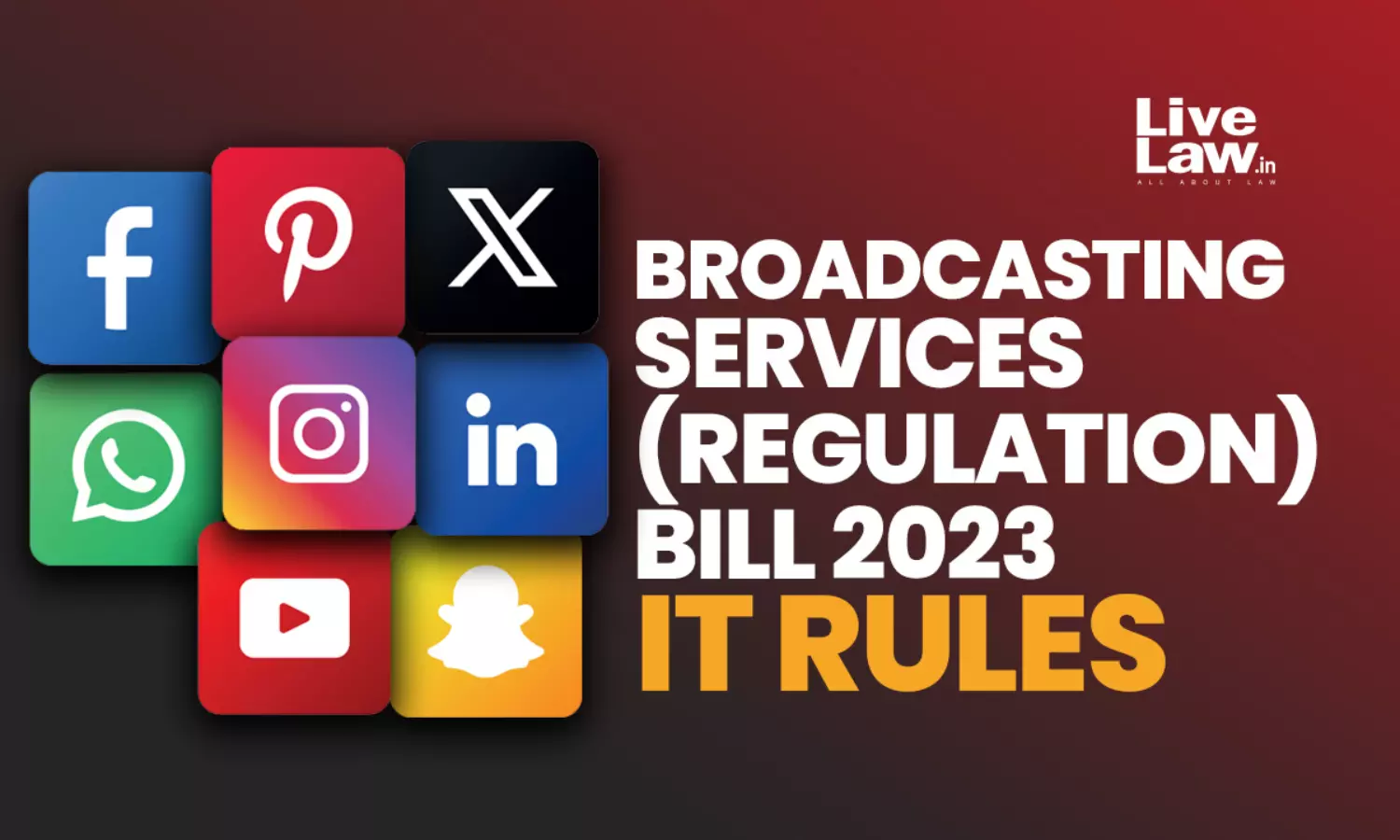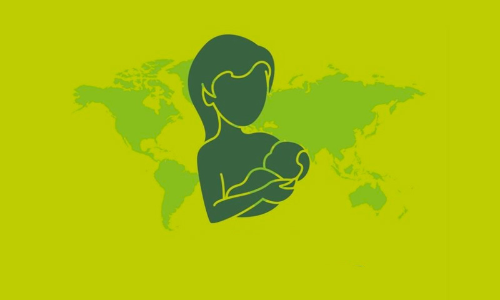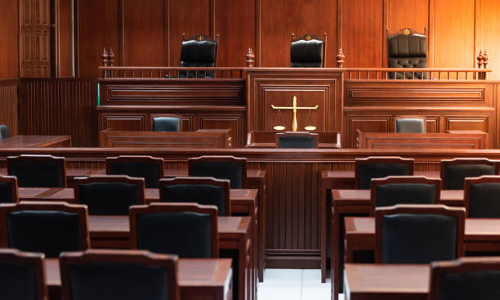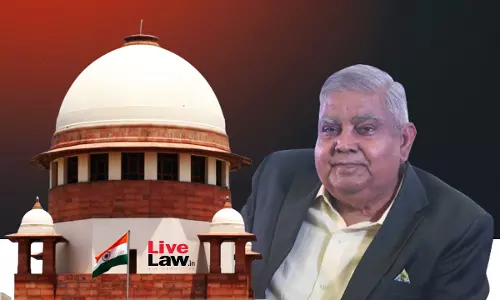Press Freedom At Risk: Why Centre's Move To Control Online News Space Raises Concerns
The Government's move can strangle the remaining bastions of independent journalism.;

The recent Lok Sabha elections witnessed an intriguing phenomenon: the soaring popularity of individual YouTubers who report, discuss, and analyze news and current affairs. YouTubers like Dhruv Rathee, Ravish Kumar, and Akash Banerjee (The DeshBhakt) have gained significant traction, with their videos raising crucial questions about government policies affecting common people. Remarkably,...
The recent Lok Sabha elections witnessed an intriguing phenomenon: the soaring popularity of individual YouTubers who report, discuss, and analyze news and current affairs. YouTubers like Dhruv Rathee, Ravish Kumar, and Akash Banerjee (The DeshBhakt) have gained significant traction, with their videos raising crucial questions about government policies affecting common people. Remarkably, these videos garnered several million views, often surpassing the aggregate views of many established TV channels. The rise in YouTubers' popularity should be viewed in the context of the declining credibility of several mainstream TV channels. Many established news outlets have alienated their audiences through a sycophantic approach towards the government, often acting as propagators of the ruling party's narrative. There is also a concomitant rise in the popularity of digital media platforms which are committed to honest, critical journalism that holds the government accountable.
Dissent and independent journalism are surviving in the digital media space precisely because it operate outside the direct control of the government. Unlike traditional media outlets, which often face regulatory pressures and potential censorship, digital platforms enjoy relatively larger autonomy which allow them to raise uncomfortable questions and highlight issues that mainstream media may overlook or avoid.
It is in this context we should view with concern some laws which the Union Government have either brought or proposing to bring because of their potential to strangle the online media space. Recently, the Press Council of India, a statutory body of journalists, passed a resolution urging the government to “withdraw the laws that are aimed at curbing the freedom of press.”
Broadcasting Services (Regulation) Bill 2023
The resolution, among others, flagged concerns about the draft Broadcasting Services (Regulation) Bill 2023 which expands the Centre's regulatory oversight over OTT platforms and digital content. A striking feature of the draft Broadcast Services (Regulation) Bill 2023 is that it includes an “individual” in the definition of a “broadcaster.” This means that an individual YouTuber who publishes content on news and current affairs could come under the regulatory framework proposed for broadcasters.
According to Section 20 of the draft bill, any person who broadcasts news and current affairs programs through an online paper, news portal, website, social media intermediary, or other similar medium, as part of a systematic business, professional, or commercial activity shall adhere to the Programme Code and Advertisement code. Newspapers and their e-versions are exempted from this provision. The definition of person, given in Section 2(z), includes an individual who is a citizen of India.
Another notable feature is that the bill delegates the power to frame the Programme Code to the Central Government. The bill does not outline any guideline for the Programme Code and this provision's validity is suspect because of the vice of excessive delegation to the Executive. If one takes guidance from the Programme Code under the Cable TV Network Act (which the Broadcasting Bill proposes to replace), it is couched in broad and vague terms prohibiting programmes offending “good taste and decency”, promoting “anti-national attitudes”, affecting “the integrity of the nation” etc.
Dangerous proposal to give Government powers to regulate content
Broadcasters, including digital news media, are proposed to be brought under a three-tier regulatory framework(Chapter IV of the bill). The first tier is an internal Content Evaluation Committee (CEC) set up by the broadcasters themselves, which have to self-certify that the content is not violative of the programme code. They also have to appoint internal grievance redressal officers to address the grievances of the public. The second tier is the grievance redressal mechanism set up by the Self-Regulatory Organizations(SRO) formed by the broadcasters, which can hear appeals from the orders of the internal grievance redressal officers of the broadcasters. At the third level is the Broadcast Advisory Council (BAC), which can hear appeals against the orders passed by the self-regulatory organizations. Also, the BAC can hear the complaints against the digital content which are referred to it by the Central Government. The BAC consists of a Chairperson, 5 officers from different Ministries of the Government of India and 5 “eminent individuals” nominated by the Central Government. Based on the recommendations of the BAC, the Central Government can take actions such as directing the deletion or modification of any specific content, taking-off the broadcaster for specified number of hours or days, imposing monetary penalties and permanent cancellation of the broadcaster's registration.
Thus, the BAC, a body which is populated by the officers of the Government or their nominees, have sweeping powers to control the content of digital media. This creates a position of clear conflict of interest as the media is expected to speak against the government. So, when the government is given a leash to control the media, it will directly and adversely affect journalistic independence.
Apart from these regulatory powers, the Bill also proposes to give wide powers to the Government to inspect the offices of broadcasters without prior notices. The equipments of broadcasters can be seized and confiscated on mere belief of the officers of the Centre that the broadcasters are violating the provisions of the Act. These drastic powers of the Government have a grave potential to create a chilling effect on press freedom and push digital media towards self-censorship. It is also to be noted that most digital platforms are small organizations, dependent on readers' subscriptions than corporate or government advertisements, and hence may be lacking the resources to wage a legal battle against the might of the State.
This is not the first attempt by the Union to bring digital media under its control. In 2021, the Centre framed the Information Technology (Intermediary Guidelines and Digital Media Ethics Code) Rules 2021 [IT Rules 2021], which stipulated that digital media should follow the code of ethics prescribed under the Rules. In fact, the three-tier regulatory mechanism proposed by the Broadcasting Services Bill is borrowed from the similar framework created by the IT Rules 2021. The Rules formed an “Inter-Departmental Committee” which had oversight powers over the digital media content (similar to the BAC proposed by the Broadcasting Bill). The Bombay High Court, in 2021, stayed the enforcement of the Digital Media Ethics Code, observing that they created a “chilling effect” on free speech. The High Court opined that the Rules will deter online media from criticizing persons in government positions. The HC said :
“Allowing the operation of the 2021 Rules in its form and substance to operate would result in the writer/editor/publisher standing the risk of being punished and sanctioned, should the inter-departmental committee be not in favour of criticism of any public figure…The indeterminate and wide terms of the Rules bring about a chilling effect qua the right of freedom of speech and expression of writers/editors/publishers because they can be hauled up for anything if such committee so wishes. The 2021 Rules are, thus, manifestly unreasonable and go beyond the IT Act, its aims and provisions.”
Later, the Madras High Court also stayed the operation of these provisions, prima facie observing that the government oversight mechanism under the IT Rules “may rob the media of its independence.” The Kerala High Court also stayed the coercive action under these rules [Disclosure : LiveLaw and this author were petitioners before the HC].
The concerns expressed by the High Courts about the IT Rules 2021 are equally applicable to the Broadcasting Bill since the Government is attempting to import the same authoritarian regulatory architecture through it.
Fact Check Unit : Govt becoming the sole arbiter of truth
In 2023, the Government amended the IT Rules 2021 to introduce a provision enabling the establishment of a “Fact Check Unit” which can declare any news published in respect of the business of the government as false or fake. If social media intermediaries(YouTube, X(Twitter), Facebook etc.) do not remove the news which has been flagged as fake by the Centre's FCU, then they will lose the “safe harbour immunity” in respect of such posts; meaning that the social media intermediaries will be exposed of legal liabilities if they allow news declared as fake by the FCU to remain in their platforms. These amendments were challenged before the Bombay High Court by comedian Kunal Kamra and the Editors Guild of India. In January 2024, a two-judge bench of the High Court delivered a split verdict, with one judge striking down the amendment and the other judge endorsing it with certain modifications. The third judge to whom the matter was referred to allowed the Government to notify the FCU while the matter was being heard. Ahead of the Lok Sabha elections, the Government notified its Press Information Bureau as the FCU. The Supreme Court stayed the notification of FCU after the petitioners raised serious concerns about allowing the Government to be the judge regarding the veracity of news adverse to itself. The matter is now pending before the third judge of the Bombay High Court.
The apparent dangers of an FCU with coercive powers has to be seen in the background of the fact that the Government routinely issues blocking orders against social media content invoking powers under Section 69A of the Information Technology Act. It goes without saying that such blocking orders are mostly issued against posts which are against the government or the ruling party. Social media giant Twitter (now X) had approached the Karnataka High Court challenging several blocking orders issued by the Central Government against certain user accounts and tweets. Many of these orders were issued in the context of the farmers' protests. After a single judge of the High Court dismissed Twitter's writ petition with a cost of Rs 50 lakhs, the appeal is now pending before the division bench.
Amendment to RTI Act through Digital Personal Data Protection Act
The Digital Personal Data Protection Act 2023 has amended the Right to Information Act 2005 to completely bar the disclosure of personal information. Earlier, the information officers could have directed the disclosure of personal information on the satisfaction that "the larger public interest justifies the disclosure of such information". This “public interest” exception has been omitted by the Digital Personal Protection Act (for more reading, refer here and here). Regarding this amendment, the PCI stated that it “curtails the crucial section of the RTI Act which has served as a vital tool for journalists for ferreting out crucial information about the functioning of governments and public servants in public interest.”
The concerns about the potential abuse of the above-discussed provisions are not merely academic or speculative, given the retributive actions the present dispensation has taken against critical media voices. We have seen instances such as the ban on documentaries about the Prime Minister, income tax raids on media houses after they published unfavourable reports, suspensions of social media accounts exposing government propaganda, imposition of telecast ban on TV channels, and the use of criminal law to suppress journalistic freedom. The decline in India's press freedom due to such repressive measures has been documented by international bodies like Reporters Without Borders which has ranked India at 159 out of 180 nations. For a regime which wants to hold a tight grip over the media narrative and does not hesitate to weaponize law to stifle criticism, these broad provisions will provide additional tools to invade the only remaining bastions of dissent, potentially spelling doom for press freedom and, consequently, democracy.
The author is the Managing Editor of LiveLaw. He can be reached at manu@livelaw.in




